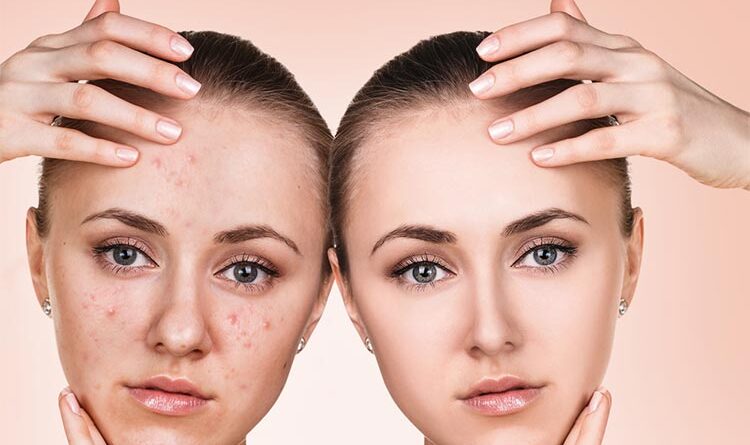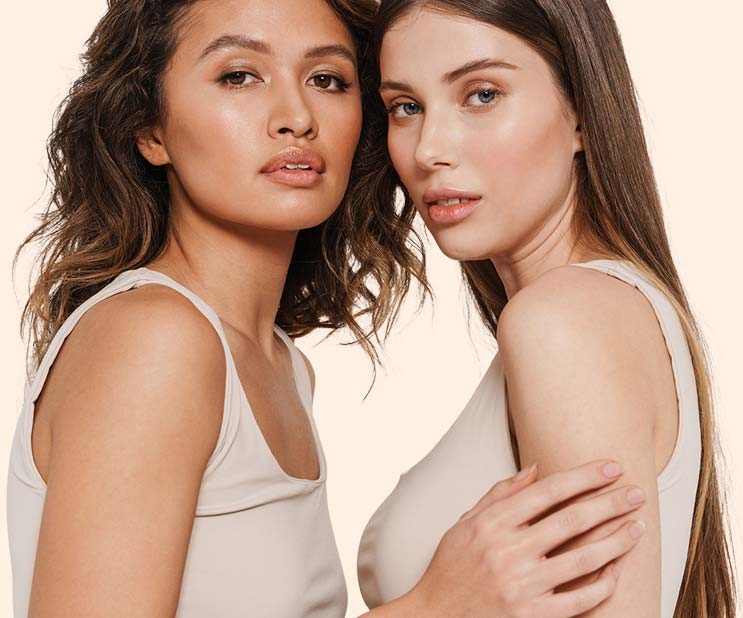Pimples and acne got your self-esteem down? If you want to learn more about its causes, symptoms, stages, types, and treatments, keep scrolling! This article will tell you what you should know about acne and how to get rid of it!
1. What Is Acne?
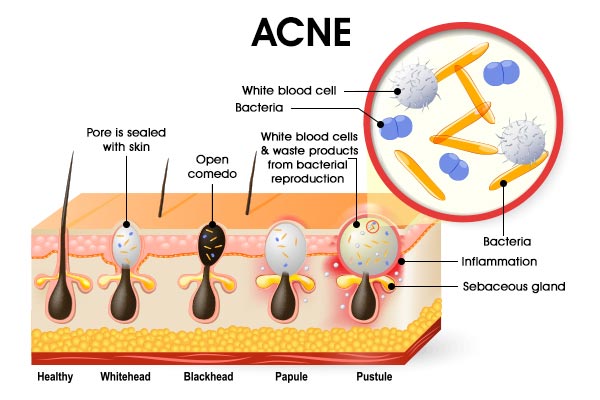
Acne is a chronic, non-communicative skin disease that involves the inflammation of the sebaceous glands. The sebaceous glands are located near hair follicles and secrete sebum, an oily substance.
In the case of acne, there is an overproduction of sebum due to hormonal stimulation, which traps dead skin cells, oil, and bacteria. The name of the condition actually originated from the most common bacterium that thrives here, Propionibacterium acnes.
Acne is pretty common and affects 80% of teens or adolescents, at whose age the sebaceous glands become active. However, some people also continue having acne well towards adulthood at ages 30 to 40, a majority of which are women. Acne also comprises 15 to 20% of all dermatological consultations.
P. acnes is a normal resident on our skin, but have abnormally higher populations in people with acne. Sebum can also block the pore or follicle opening, trapping the bacteria. These cause skin inflammation, blackheads, whiteheads, nodules, pimples, and cysts.
These symptoms usually appear on the face, neck, chest, back, upper arms, and shoulders. Acne is not really dangerous, but complications can lead to more problems and scarring.
2. What Are The Causes Of Acne?
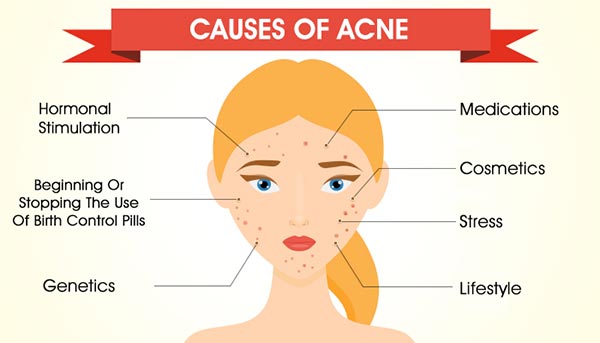
So, what causes acne? Although the real and direct cause of acne is unknown, it is generally associated with elevated androgen levels.
During adolescence, androgen production dramatically rises in both males and females, but it’s converted to estrogen in women. Thus causes the activation and growth of oil glands, sebaceous glands under the skin.
High sebum amounts may cause the cellular breakdown in pores, sloughing off dead cells and encouraging bacterial growth. This then leads to a pimple or acne breakouts.
There are also other specific factors considered by doctors and experts to trigger and contribute to the condition. These include the following:
-
Hormonal Stimulation
-
Beginning Or Stopping The Use Of Birth Control Pills
-
Genetics
-
Medications
-
Cosmetics
-
Stress
-
Lifestyle
Hormones, especially androgen, play a major role in acne formation, and hormonal changes and imbalances during puberty, pregnancy, and menstruation can all cause acne.
These pills are also hormones, and the effect of sudden withdrawal or use of these lead to several changes in the body. Because of high levels of the hormone androgen, acne soon develops.
Predisposition or a higher risk of having acne is also hereditary. If your parents or older siblings had acne, you are more likely to suffer from it too.
Some medications and maintenance drugs that contain lithium and androgen also increases the risk of acne development.
Makeup and other cosmetic products that are greasy and comedogenic can cause pore blockage, which can eventually lead to pimples.
Lack of sleep and emotional stress can also lead to early skin aging and reduced ability of cells to regenerate, which can lead to acne.
Of course, lifestyle affects your overall health, especially your skin. Smoking, drinking alcohol, exposure to pollution, lack of exercise, and a diet that consists mostly of oily and salty food can indirectly cause acne breakouts.
Although most of us think that poor hygiene causes acne and pimples, it’s rarely the case, because acne development starts within the skin. Poor hygiene just increases the chance of having dirt and dead skin cells in the sebum-filled pores, but people who wash their face regularly can still get acne.
Related:- ACNE IN TEENS: HELP YOUR DAUGHTER TACKLE TEENAGE ACNE WITH BEST TIPS
3. What Are The Stages Of Acne?

Aside from knowing the causes and nature, it’s also important to understand its types and stages to know how to cure acne. Based on research, the frequency and severity of acne depend on its stage and the bacterial strain of P. acnes that caused it.
Based on the causative agent, here are the types of acne:
- Acne Vulgaris – this is the regular, most common type of acne on the face, shoulders, back, and buttocks.
- Comedonal Acne – This is under acne vulgaris, but can occur anywhere on the body. This is characterized by milia, blackheads, and bumpiness of the skin.
- Cystic Acne – This is the most severe level of acne vulgaris, and can happen anywhere. This involves large, deep-seated and painful cysts and tons of inflammation.
- Acne Rosacea – This type affects adults 30 years old or older, and more common in women, but more severe when it happens to men. It only occurs on the face where pimples and bumps can turn red and flushed due to many blood vessels showing along the cheeks and nose. It can develop into an inflamed nose and eye problems.
- Acne Mechanica – This type, also known as sports acne, is triggered by too much pressure, friction, or heat on the skin, more common around the body but can also appear on the face. It usually affects young athletes due to pads, helmets, and bands that rub against the skin and trap heat.
- Acne Cosmetica – As the name suggests, this type results from cosmetic products like moisturizers, creams, makeup, or even hair products. It is a type of comedonal acne.
- Excoriated Acne – This is the result of picking, poking, or popping a pimple that caused wounds and often leave marks.
-
Mild
-
Moderate
-
Severe
Technically, dermatologists classify all acne types in grades I to IV, IV being the most severe and I the mildest. However, a simple and popular way to classify acne is in three ways: mild, moderate, and severe.
This is determined by a doctor or expert through visual observation, and there is no test to exactly determine acne severity. Here are brief descriptions of each:
Few to minor breakouts fall as mild acne. This is characterized by a few blackheads and whiteheads, bumps, and pimples with occasional inflammation. These are also often concentrated in a small skin area.
Mild acne can be treated with over-the-counter products. It’s better to treat it early as it may progress to moderate or severe acne.
You have moderate acne when your breakouts are more pronounced. You have blackheads, bumps, and inflamed pustules and papules. You can try over-the-counter products, but they’re rarely strong enough. You might need doctor prescribed medications to clear this type.
What distinguishes severe from moderate acne is the presence of inflammation. Your pimples also tend to be bigger, and more swollen and red. It’s recommended to consult a dermatologist to control or get rid of severe acne.
4. How To Treat Acne
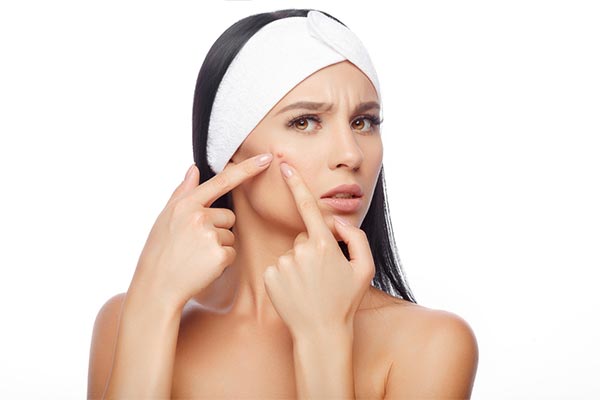
Acne treatments aim to heal pimples, cleanse the skin deeply, prevent new pimples from developing, minimize or prevent scarring, or reduce acne severity.
As mentioned before, early treatment is best for acne to avoid scars and progression to severe types. To do this, you can apply over-the-counter products and topical antibacterial creams or gels. There are also masks, pads, soaps, and lotions to get rid of acne.
For more severe cases, prescription drugs, and topical or oral antibiotics and retinoids are often administered. Dermatologists may also suggest minor procedures like corticosteroid injections for cysts.
It also has skin-clearing components to deeply cleanse the skin, disinfect, and remove impurities and dirt better complexion and control acne breakout.
The different stages of acne and its various types can be treated and prevented. Remember the information you learned and follow some of the given tips for clearer skin and a more confident you!
“Hope you find the post helpful and we are excited to hear what you think of it!”

